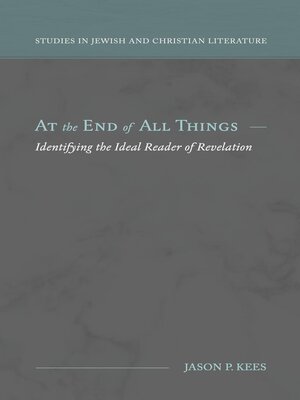At the End of All Things
ebook ∣ Identifying the Ideal Reader of Revelation · Studies in Jewish and Christian Literature
By Jason P. Kees

Sign up to save your library
With an OverDrive account, you can save your favorite libraries for at-a-glance information about availability. Find out more about OverDrive accounts.
Find this title in Libby, the library reading app by OverDrive.



Search for a digital library with this title
Title found at these libraries:
| Library Name | Distance |
|---|---|
| Loading... |
John's Revelation integrates language and imagery from the Hebrew Bible, especially from Exodus, Isaiah, Ezekiel, and Daniel. While attention to John's use of the Hebrew Bible has contributed toward a helpful framework for interpreting Revelation's difficult themes and images, less attention has been given to John's integration of certain New Testament texts. At the End of All Things examines these potential verbal connections that Revelation shares with other New Testament texts. Furthermore, it provides a needed discussion of the canonical approach within New Testament scholarship. Reading through a canonical framework and focusing upon Revelation's placement within the New Testament canon, Kees argues that the ideal-reader of Revelation is one who is familiar with both the Old and New Testaments of the Christian canon.







